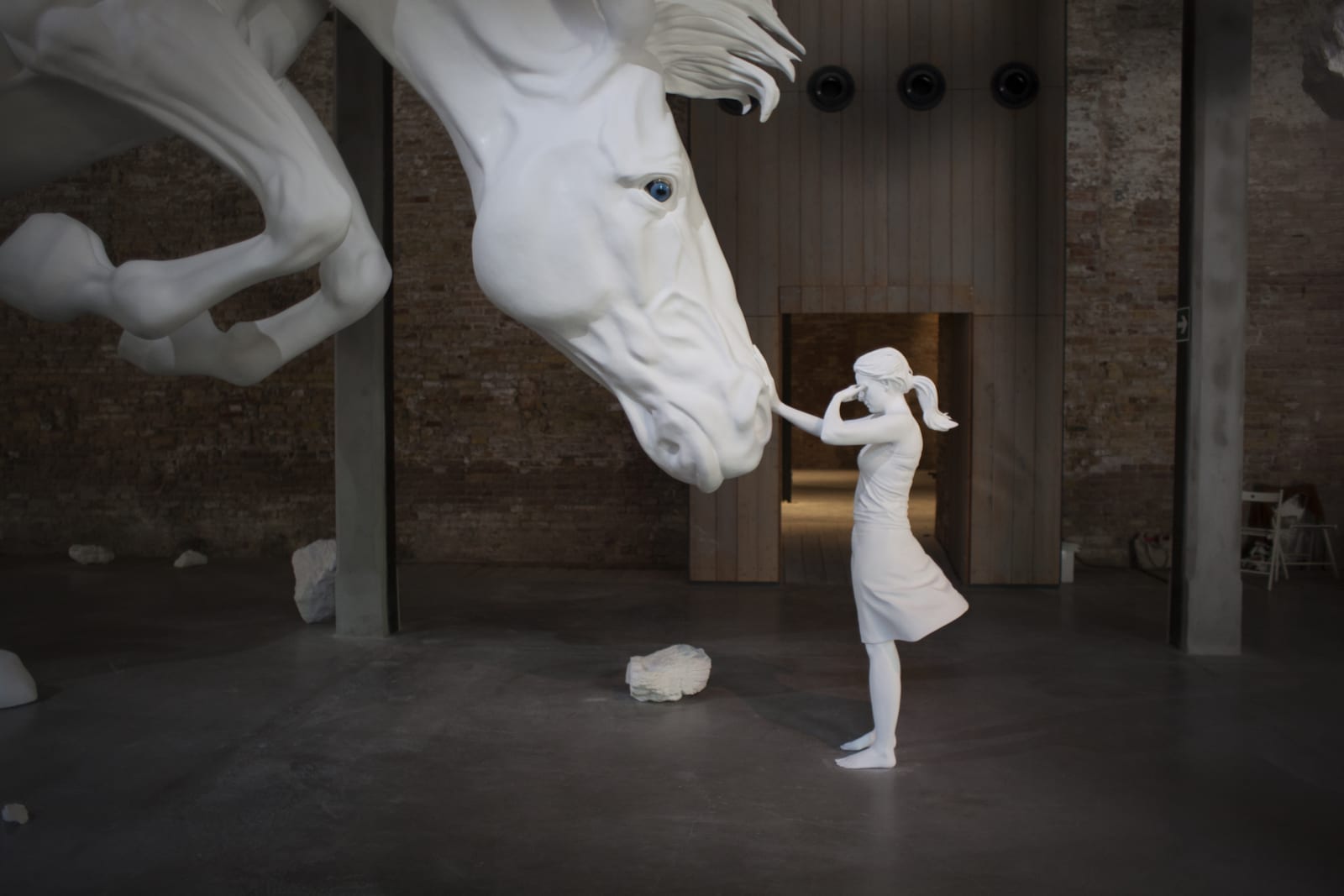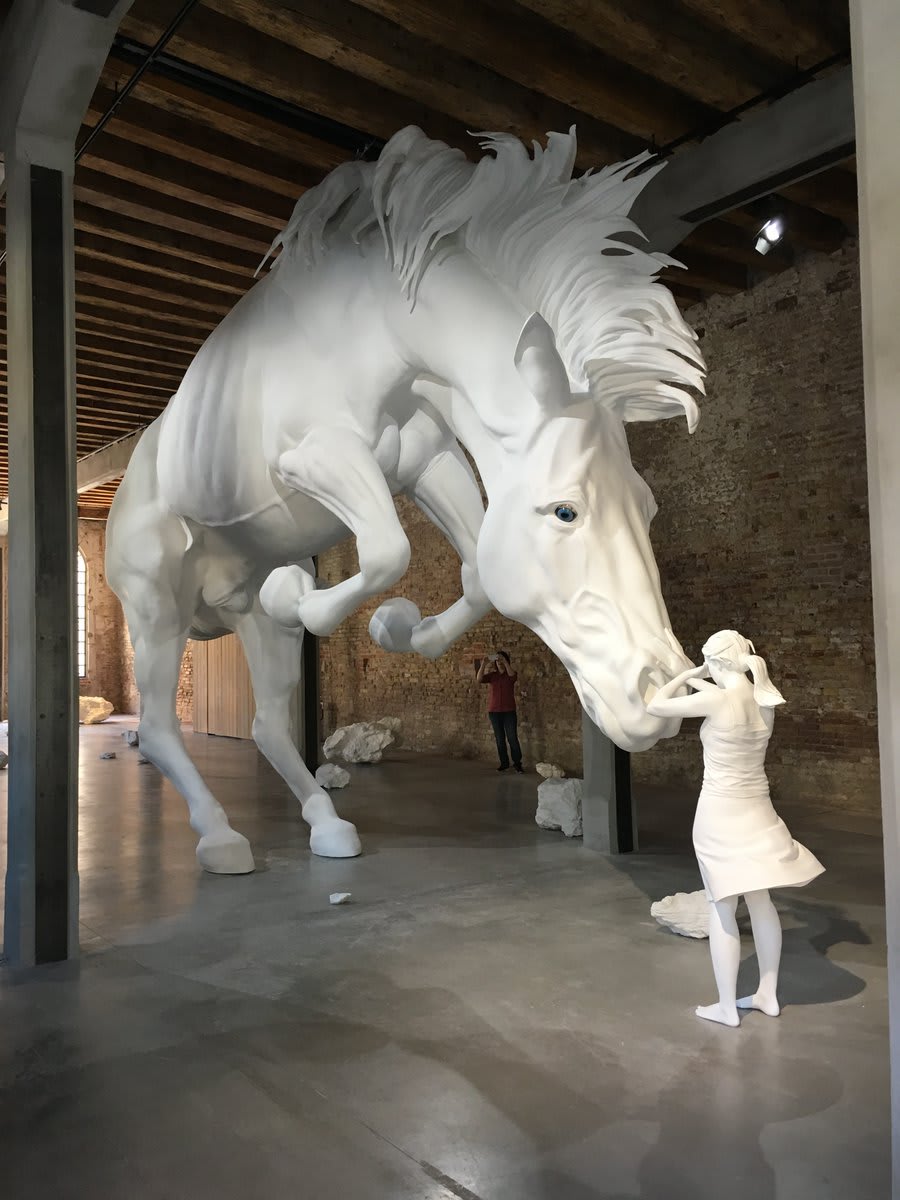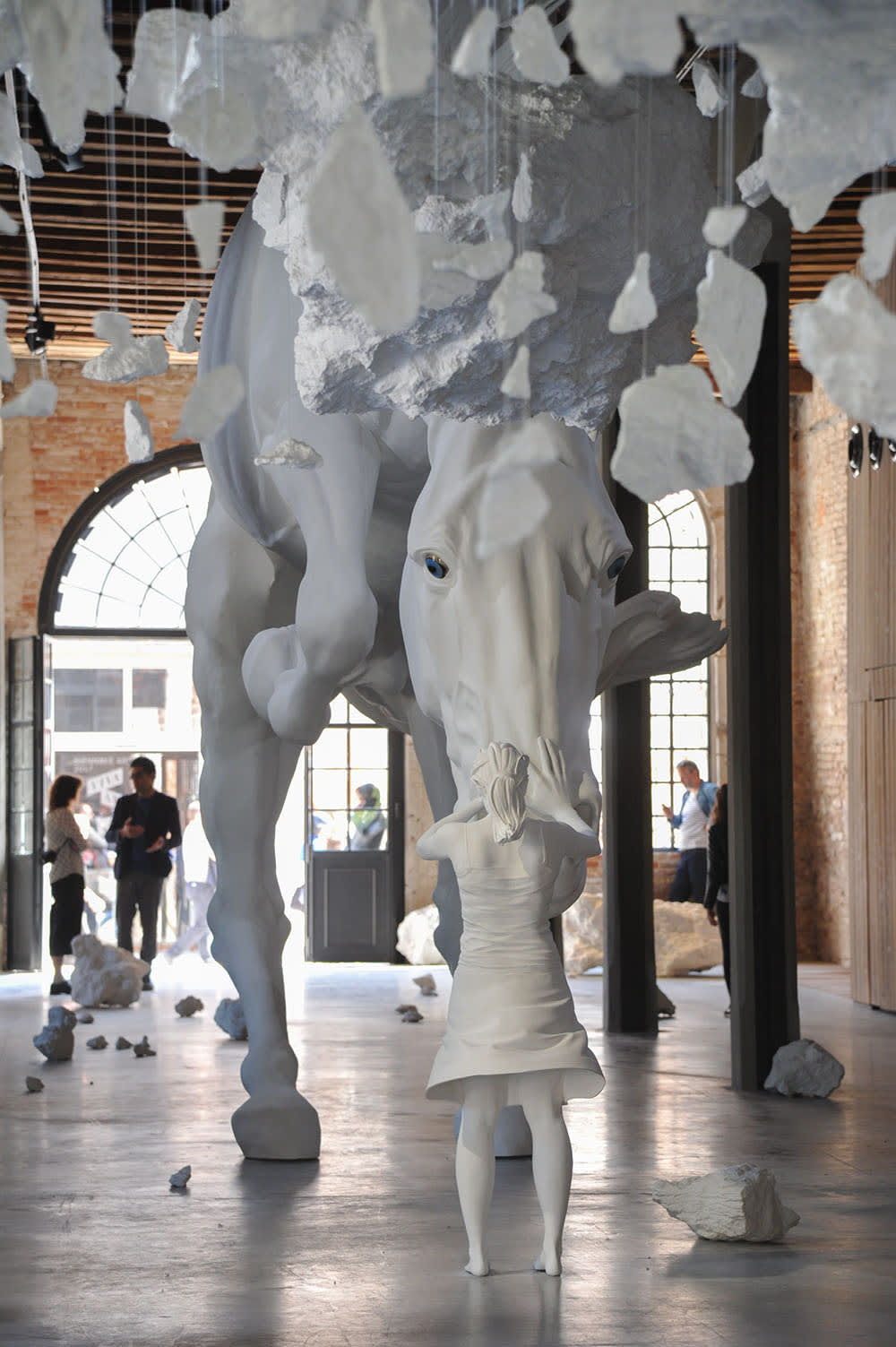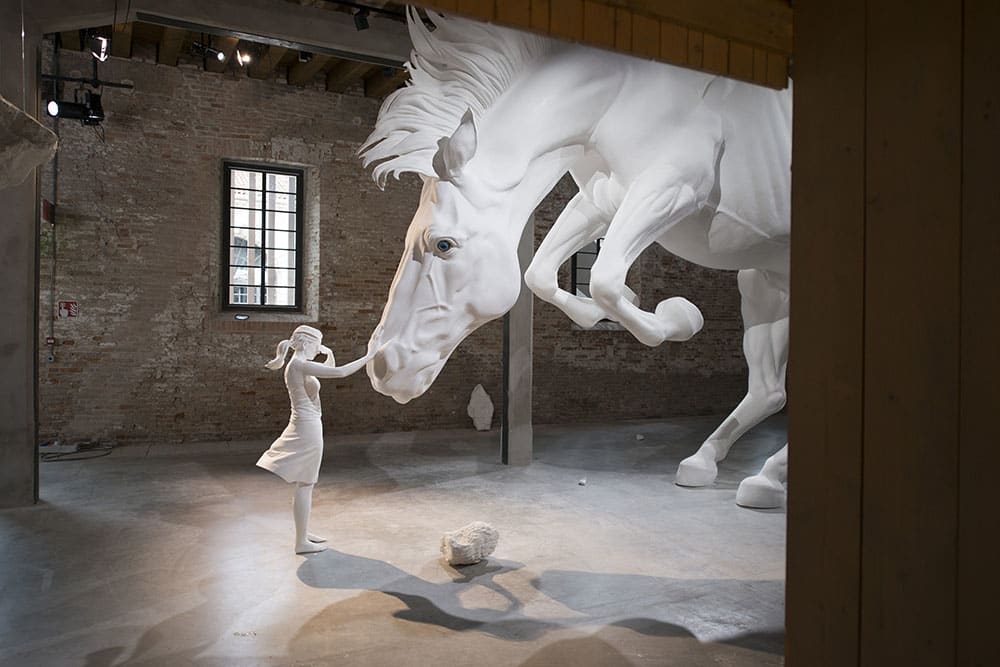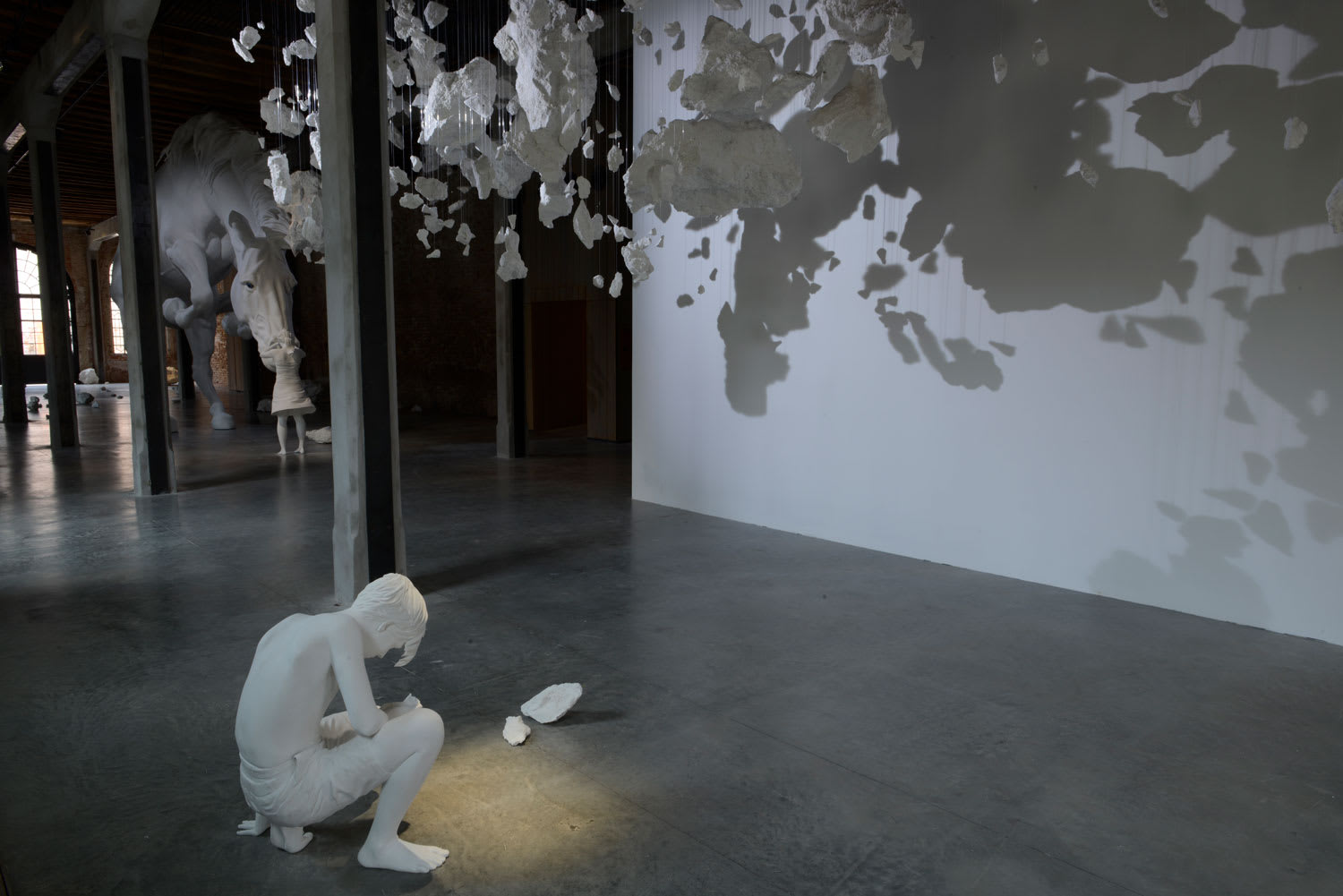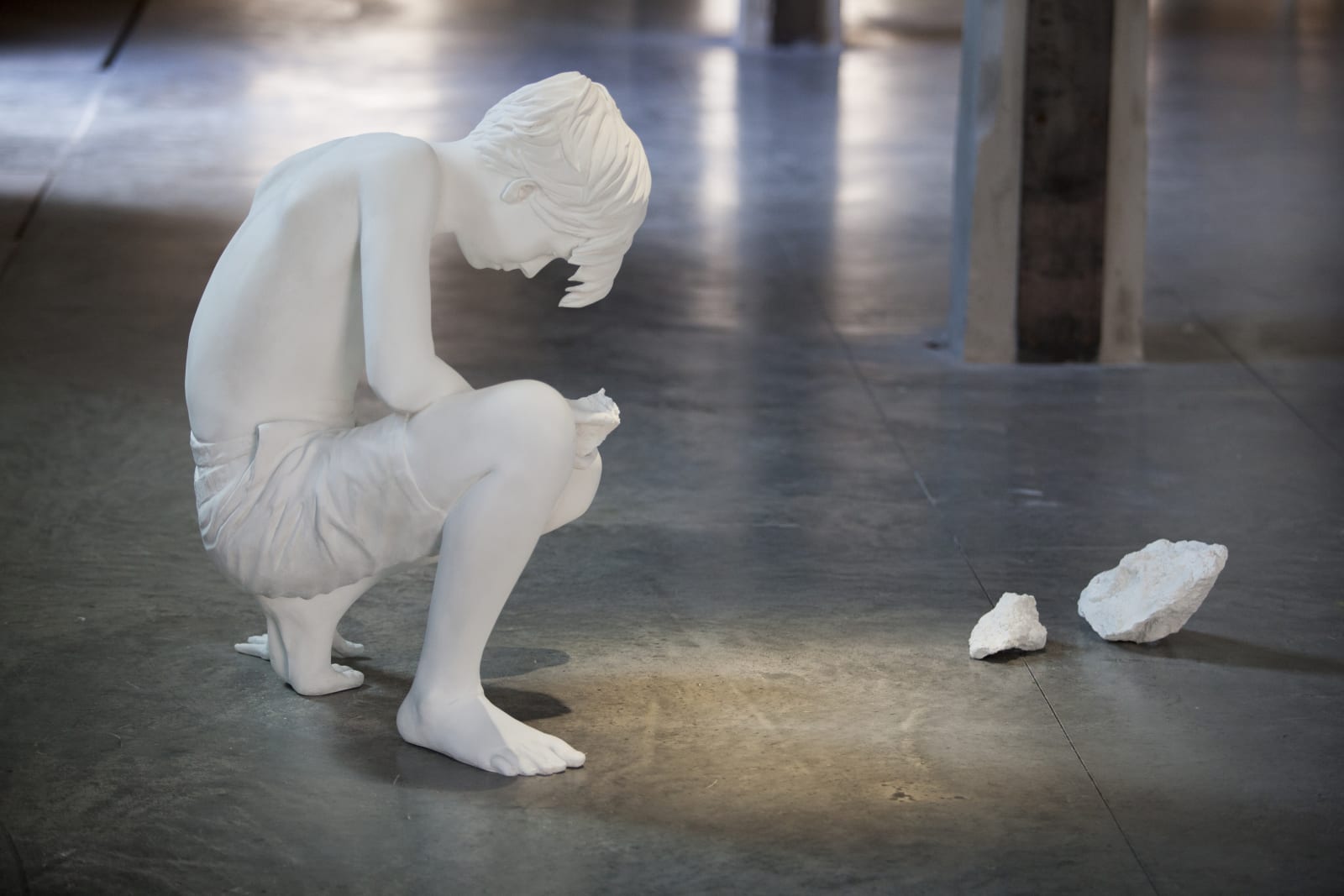Claudia Fontes Argentinean, b. 1964
The Horse Problem, Installation at the Argentinean Pavilion, Arsenale, 57a Venice Biennial, Italy, 2017
Sculptural installation
Marble dust and resin, wall and shadows
Marble dust and resin, wall and shadows
Size of space 500 x 4700 x 1000 cm
Human figures are life-size. Horse and shadows approximately 500 x 600 cm
Human figures are life-size. Horse and shadows approximately 500 x 600 cm
Further images
Artist statement: The Horse Problem was an installation of sculptures I made on the occasion of representing Argentina at the 57a Venice Biennial in 2017. The installation shows a bullet-time...
Artist statement:
The Horse Problem was an installation of sculptures I made on the occasion of representing Argentina at the 57a Venice Biennial in 2017.
The installation shows a bullet-time frozen scene in which a horse, a woman and a young man are trapped in an infinite causality loop for which fear is the cause and the symptom at once. The horse’s fear of being trapped in the building creates an avalanche of rocks travelling into his direction, the shadows of which form a mirrored image of himself, albeit exploding. The whiteness and smoothness of the material give the scene the quality of an apparition as if the characters and their circumstances existed in a parallel temporality. The audience, as onlookers, complete the narrative.
The point of departure for this image was the hidden presence of the horse’s exploitation in the exhibition space and its materiality: wood, bricks and iron could only have been made and put together by horse-power in the times the Arsenal buildings were built.
Since I was representing Argentina, I also looked into how the country had historically represented itself and focused on a specific painting, The Return of the Indian Raid, by Ángel Della Valle. This was the first artwork commissioned to an artist with the specific purpose of culturally representing Argentina internationally as a nation in 1892. The painting depicts what was understood then as “The Conquest of the Desert,” the violent takeover by the State in the 19th century of land inhabited by indigenous populations. In its time, the painting was intended to convince the international audience that Argentina was a country reliable to invest in and that could easily fit into the then-emerging global capitalism since we, “Argentineans”, had exterminated the original population, labelled as “barbaric”.
I borrowed from the painting those characters who were in a passive role -a white horse and a captive woman- and set them into action, reallocating roles amongst them. By ruling out racism, patriarchy and speciesism, The Horse Problem‘s narrative offers in a flash possible reinterpretations of history, a chance to construct an alternative narrative for our future as a species.
The Horse Problem was an installation of sculptures I made on the occasion of representing Argentina at the 57a Venice Biennial in 2017.
The installation shows a bullet-time frozen scene in which a horse, a woman and a young man are trapped in an infinite causality loop for which fear is the cause and the symptom at once. The horse’s fear of being trapped in the building creates an avalanche of rocks travelling into his direction, the shadows of which form a mirrored image of himself, albeit exploding. The whiteness and smoothness of the material give the scene the quality of an apparition as if the characters and their circumstances existed in a parallel temporality. The audience, as onlookers, complete the narrative.
The point of departure for this image was the hidden presence of the horse’s exploitation in the exhibition space and its materiality: wood, bricks and iron could only have been made and put together by horse-power in the times the Arsenal buildings were built.
Since I was representing Argentina, I also looked into how the country had historically represented itself and focused on a specific painting, The Return of the Indian Raid, by Ángel Della Valle. This was the first artwork commissioned to an artist with the specific purpose of culturally representing Argentina internationally as a nation in 1892. The painting depicts what was understood then as “The Conquest of the Desert,” the violent takeover by the State in the 19th century of land inhabited by indigenous populations. In its time, the painting was intended to convince the international audience that Argentina was a country reliable to invest in and that could easily fit into the then-emerging global capitalism since we, “Argentineans”, had exterminated the original population, labelled as “barbaric”.
I borrowed from the painting those characters who were in a passive role -a white horse and a captive woman- and set them into action, reallocating roles amongst them. By ruling out racism, patriarchy and speciesism, The Horse Problem‘s narrative offers in a flash possible reinterpretations of history, a chance to construct an alternative narrative for our future as a species.
Join our mailing list
* denotes required fields
We use cookies on our website to improve your experience. You can find out why by reading our Privacy Policy.
By continuing to browse our site you agree to our use of cookies.
